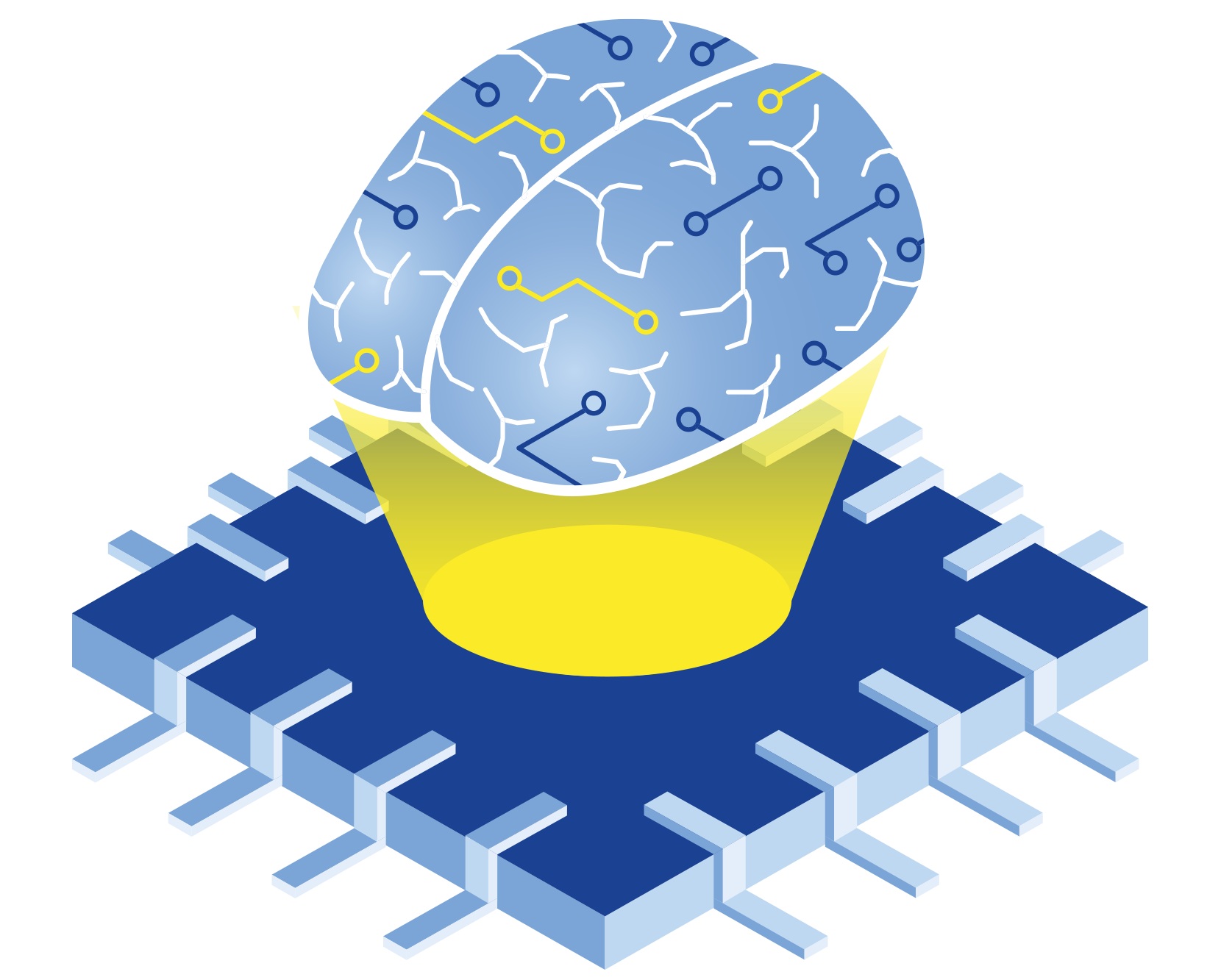AI & Data Science
AI and data science play a critical role for IT organisations The increasing use of artificial intelligence and the rapid growth of data science are dramatically changing the way companies do business. Organisations need to focus on the potential of AI and data science to remain competitive.

Analysing and understanding
AI and data science are playing an increasingly important role in most organisations as tools for automation and AI-enabled decision making. Artificial intelligence, machine learning and deep learning are revolutionising data and document processing, as well as big data analytics.

AI-powered systems are versatile and can help companies automate existing processes, improve customer service, optimise customer and supply chain management, and identify patterns and trends in data. In addition, AI and data science can help businesses analyse and understand complex tasks and processes.

Saving time and resources
Our advanced technologies and methodologies enable us to derive powerful insights from your data and automate complex processes, so that you can not only improve the efficiency of your organisation, but also make better business decisions and outperform your local competitors. By automating routine tasks and using predictive analytics, organisations can save valuable time and resources while improving the quality of their results.
Close collaboration
Our experts have extensive knowledge and experience in machine learning, data analysis and visualisation, and work closely with our clients to develop customised solutions to meet their specific needs.

Extensive research expertise
RISE has extensive expertise in this area, from automatic document classification and data extraction to pre- and post-processing of textual data using Natural Language Processing (NLP) and text mining. We are constantly looking for new ways to improve our technologies and capabilities, and work closely with leading researchers and practitioners in AI and data science.
Classification
Data extraction
Pre- and post-processing
OCR
On-premises hardware and GPUs
AIR (AI by RISE)

Classification
Machine learning and neural networks allow RISE to automatically classify documents into different categories to minimise manual effort and facilitating intelligent decision-making.
Classification is based on pattern, content and semantic analysis. It enables organisations to work more efficiently, improve their processes and gain a competitive advantage.
Classification in machine learning is the process of training a model to make predictions about the category or class of data points. The data is first collected and processed to train an appropriate classification model, such as decision trees, SVM, Naive Bayes, logistic regression or neural networks. The model is evaluated using various metrics such as accuracy, precision, recall and F1 score. Hyperparameter tuning is used to optimise the model and improve its ability to generalise to unknown data. Finally, the model can make class predictions for new, unknown data.

Data extraction
Machine learning and advanced analytics also allow information to be extracted from documents, which can then be integrated into other applications, systems or cloud platforms.
RISE uses advanced OCR technology, computer vision and intelligent algorithms to automatically extract data from documents. This enables organisations to improve business processes, save time and resources and make data-driven decisions.
This method of targeted data extraction is particularly useful for extracting structured data from unstructured documents and making it usable for further analysis or applications. However, it often requires careful pre-processing and adaptation of the models to the specific requirements and format of the documents. Entities or patterns are identified using Named Entity Recognition (NER) or Regular Expressions (Regex). Contextual analysis helps to verify that the extraction is correct.

Pre- and post-processing
RISE also offers pre- and post-processing technologies to ensure that the data fed into machine learning algorithms is of the highest quality.
By using data cleansing, normalisation and feature engineering technologies, we can improve the quality of the results and ensure that the algorithms are accurate, reliable and scalable.
Pre- and post-processing steps ensure that the machine learning model is trained on clean, well-prepared data, and that its predictions and probabilities are correctly calibrated and scored. In pre-processing, data cleansing (missing values, outliers, duplicates) is particularly important to obtain a good training set. Data normalisation (scaling, transformation) must also be performed. We use feature engineering to improve model performance and avoid overfitting.

OCR
OCR technology and text recognition are other important aspects of document processing. RISE uses advanced OCR technology, AI-based text recognition and machine vision to automatically recognise text from documents and convert it into digital formats such as JSON or XML. This enables organisations to streamline business processes and save valuable resources.
Modern OCR systems often use deep learning models, particularly Convolutional Neural Networks (CNNs) for feature extraction and Recurrent Neural Networks (RNNs) or Transformers for sequence modelling, to understand the relationships between letters and words.
These models are trained on large amounts of annotated data to capture the variety of fonts, font sizes and text formats to ensure high recognition accuracy under different conditions.

On-premises hardware and GPUs
RISE trains its machine learning models on its own on-premises hardware and GPUs to ensure a secure, protected and GDPR-compliant environment for customer data. These edge computing solutions are tailored to the individual needs of customers, and are designed to maintain control over the data and provide additional protection for customer data. By using on-premises hardware and GPUs, organisations can ensure that their data is safe and secure.
Hardware, especially graphics processing units (GPUs), play a critical role in the development and implementation of machine learning (ML) and especially deep learning (DL) models.GPUs are designed for parallel processing, allowing them to perform thousands of operations simultaneously.
Modern GPUs have specialised units, such as tensor cores, that are specifically optimised for DL computations. In addition, multiple GPUs can be combined to train models in parallel or on larger datasets. By speeding up calculations, GPUs enable faster training of models, especially large neural networks.

AIR (AI by RISE)
AIR is a comprehensive solution for developing and managing machine learning and artificial intelligence applications. It enables organisations to manage the entire lifecycle of an ML application, resulting in faster and more efficient solutions for customers. With AIR, data can be imported, labelled, trained and models developed, deployed and operated.
The platform supports the integration of data directly from customer systems through various adapters that can both tap and receive data. Our powerful memory is dynamically expandable and can store large amounts of training data. Advanced server GPUs in our own data centre are used to train the models, which means that the data always remains within our infrastructure and is not exposed to external providers such as OpenAI, Amazon or Microsoft.
AIR uses advanced open source tools for model development, including PyTorch, Scikit-Learn, DVC and Docker. Developed models are run as Docker containers in a dynamically scalable Kubernetes environment and integrated into business processes via HTTP APIs.
During operation, our models are automatically monitored by collecting metrics. We use OpenSearch, Prometheus and Grafana to visualise these metrics and send automated notifications of important events. AIR enables organisations to gain valuable insights from their data and develop innovative products and services.

Whether artificial or natural...
...we have a great deal of intelligence. And this is being applied in a wide range of research areas.

